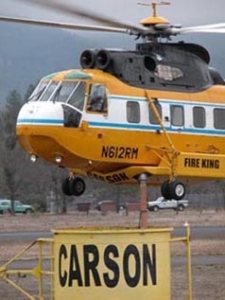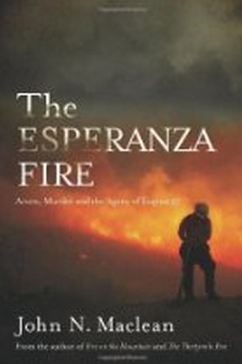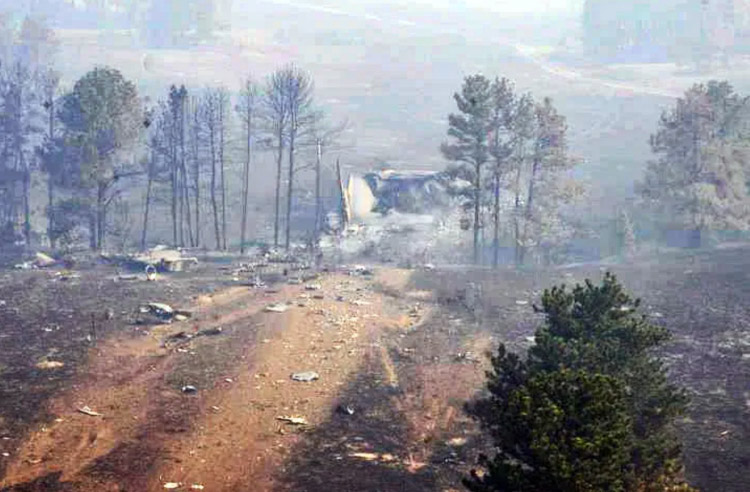
Two former employees of Carson Helicopters are facing 20 years or more in prison for charges related to the crash of a helicopter August 5, 2008 that killed nine people (seven firefighters and two crew members) as it attempted to take off from a remote helispot on the Iron Complex or Iron 44 Fire in northern California.
Last week a federal grand jury in Medford, Oregon indicted Steven Metheny, 42, former Vice President of Carson, and Levi Phillips, 45, the former maintenance chief of the company, for charges of conspiracy to defraud the United States which could earn them up to 20 years in prison if convicted.
Metheny was also indicted in 22 other counts of mail fraud, wire fraud, making false statements to the Forest Service, endangering the safety of aircraft in flight, and theft from an interstate shipment. In addition to the 20 years for conspiracy to defraud charges, he could get a maximum sentence of 20 years for every mail and wire fraud count, 20 years for each endangering the safety of aircraft in flight count, 10 years for the interstate theft count, and up to five years for each false statement count.
According to the findings of the National Transportation Safety Board in 2010, there was “intentional wrong-doing” by Carson Helicopters that under-stated the weight of the Sikorsky S-61N helicopter and over-stated its performance in the documents they provided to the USFS when bidding on $20 million in firefighting contracts for seven helicopters. As a result, when the helicopter attempted to take off from the helispot on the Iron 44 Fire with firefighters and a flight crew of three, it was over the allowable weight even before the firefighters boarded the ship. The helicopter crashed into some trees and caught fire, just after lifting off.
Killed in the crash were pilot Roark Schwanenberg, 54; USFS check pilot Jim Ramage, 63; and firefighters Shawn Blazer, 30; Scott Charlson, 25; Matthew Hammer, 23; Edrik Gomez, 19; Bryan Rich, 29; David Steele, 19; and Steven “Caleb” Renno, 21. The copilot and three other firefighters were seriously injured.
In March of 2012, a jury ordered the manufacturer of the helicopter’s engines, General Electric, to pay $69.7 million to William Coultas (the surviving pilot), his wife, and the estate of Roark Schwanenberg (the pilot who was killed).
After the crash, between September 26 and October 3, 2008, the USFS suspended the contract for some of Carson’s helicopters. On February 18, 2009, the USFS canceled their contract (copy of the contract) with Carson (copy of the termination letter) based on inaccurate claimed weights of the helicopters. The company then surrendered their FAA Certificate which is equivalent to an operating license. After that they received a contract for seven S-61s to fly for the military in Afghanistan as a subcontractor for the company formerly known as Blackwater Worldwide, which was renamed “Xe”. In February 2010, Sikorsky announced a joint venture with Carson to supply up to 110 modernized S-61T helicopters to the U.S. government, primarily for the State Department.
The U.S. Attorney’s office in Oregon is working with the Offices of Inspector General for both the Department of Agriculture and the Department of Transportation in Portland, Oregon and Seattle, Washington, and the FBI and the IRS in Medford, Oregon in the investigation and prosecution of this case.
- The mother of one of the firefighters killed in the crash reacts to the indictments.
- More information on Wildfire Today about the crash.
- The federal grand jury charges (the indictment)
Thanks go out to Joseph and Kelly.






